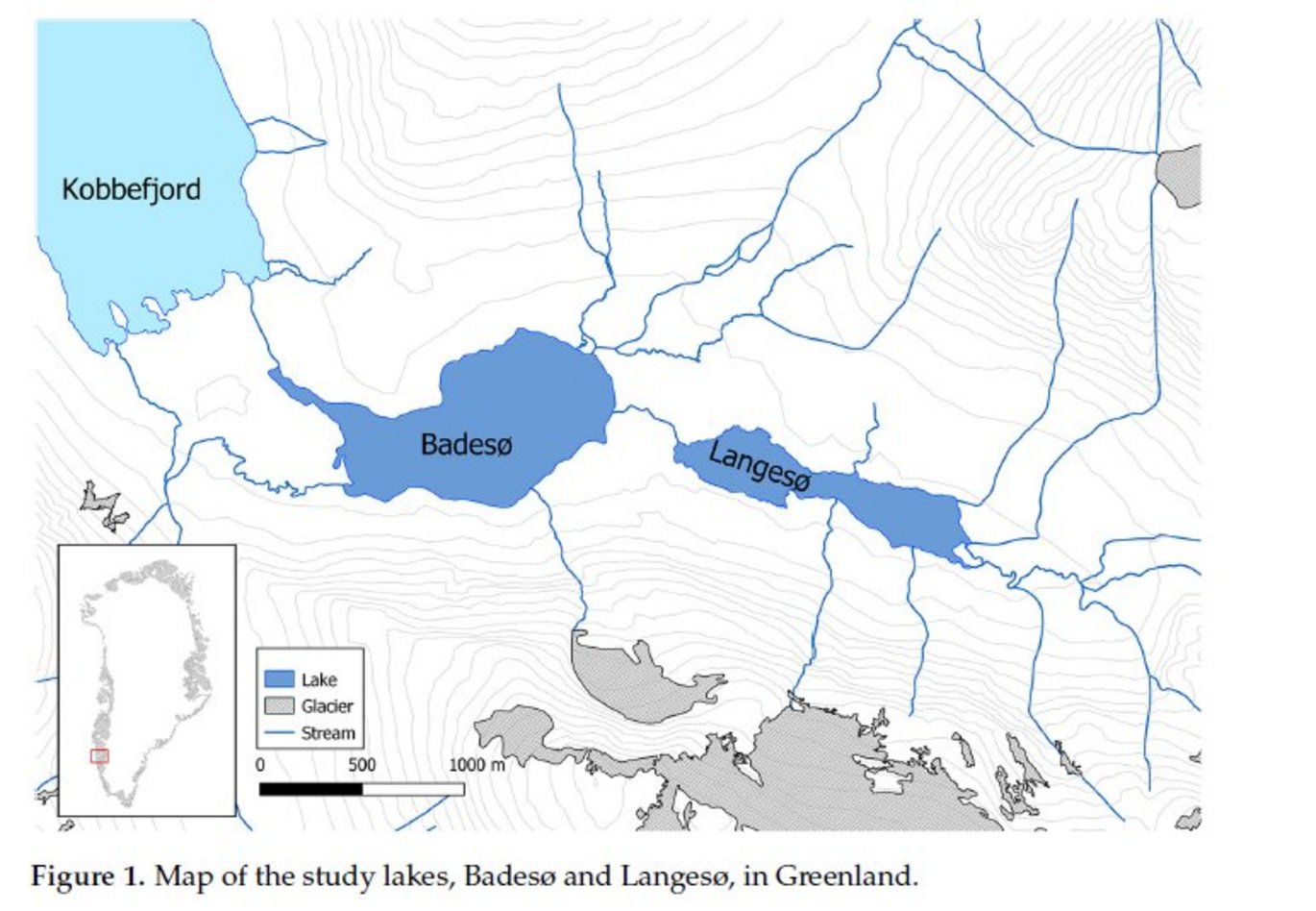The Importance of Habitat and Lake Morphometry for the Summer Diet Choice of Landlocked Arctic Char in Two West Greenland Lakes
New publication by Andreas S. Berthelsen, Katrine Raundrup, Peter Grønkjær, Erik Jeppesen and Torben L. Lauridsen

Abstract:
Arctic char (Salvelinus alpinus) is a top predator and the most widespread fish in Arctic lakes. The presence of Arctic char affects the predator–prey dynamics of the key species in the food webs in these lakes. This study sought to elucidate the effects of habitat (littoral, pelagic, or profundal) and lake morphometry on the trophic position of this char in the food web. Using stomach content and stable isotope analyses, we investigated the effect of fish length, habitat, and time (individual survey years: 2008, 2013, 2018, and 2019) on the dietary niches of landlocked Arctic char populations during summer in two west Greenland lakes: Badesø (area 0.8 km2, mean depth 9.2 m) and Langesø (area 0.3 km2, mean depth 5.0 m). The small char (<20 cm fork length) in Badesø generally foraged less littoral macroinvertebrates than those from Langesø. The large chars were mainly piscivorous in both lakes. In Badesø, there was a shift from relying on littoral to pelagic invertebrates by the small char from 2008–2013 to 2018–2019. The proportionally larger size of the littoral habitat in the smaller Langesø led to an increased reliance on littoral-derived macroinvertebrates in the diet of the small char, more so than in the larger Badesø, where the predominant reliance was on pelagic sources.
https://doi.org/10.3390/w15122164
